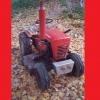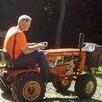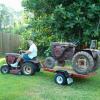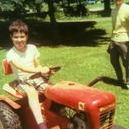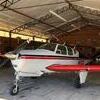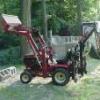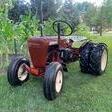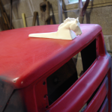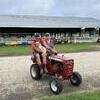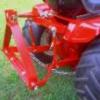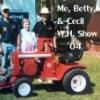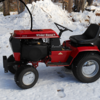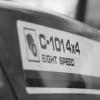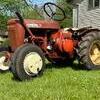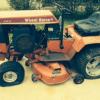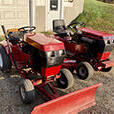Leaderboard
-
in all areas
- All areas
- Markers
- Marker Comments
- Marker Reviews
- Articles
- Article Comments
- Article Reviews
- Classfieds
- Classified Comments
- Classified Reviews
- Wiki's
- Wiki Comments
- Wiki Reviews
- Blog Entries
- Blog Comments
- Images
- Image Comments
- Image Reviews
- Albums
- Album Comments
- Album Reviews
- Files
- File Comments
- File Reviews
- Posts
-
Week
-
All time
November 28 2011 - July 17 2025
-
Year
July 17 2024 - July 17 2025
-
Month
June 17 2025 - July 17 2025
-
Week
July 10 2025 - July 17 2025
-
Today
July 17 2025
- Custom Date
-
All time
Popular Content
Showing content with the highest reputation since 07/10/2025 in all areas
-
19 pointsI've driven past it many, many times having lived just 9 miles north. Going into Chandler's with my dad as a little boy. I wish I could have appreciated what I saw at the time. I saw Chandler's showroom across 30+ years of it evolving. But mostly.... I love wheel horse because of my Dad. He was no ordinary Dad. He was the best. He taught me how to steer while sitting on his lap on the 1962 Lawn Ranger. That and a 1963 Thunderbird! Ha ha. Then came the time to solo on the Lawn Ranger! If he told me once, he told me 50 times..."Get in trouble? Turn off the key! This tractor will run right up a tree and flip on its back". I often wondered what kind of beast I was driving. My dad only lived to see me acquire one wheel horse. A 1977 B-80. I bought 8.5 acres of land. And burnt up the Tecumseh motor on the Ranger mowing some of it. So I needed something bigger. (I had no clue what wheel horse really made). But the B-80 mowed about 3 acres sufficiently. Each wheel horse I bought had a high and a low. I thought of my dad each time I got one. And was also sad to think he wasn't there to share in the experience. Sorry I got caught running down memory lane. I have often wondered. Has anyone seen photos or videos from within the wheel horse factory on Ireland Rd.??
-
17 pointsI cleaned, lubricated and sharpened/balanced the blades on the 36” RD deck that’s on the 308-8 I bought from @Docwheelhorse Ill do an oil soak and dry once we see the sun again MA. I recently installed the ceiling, mounted electric winch on a trolley system in my garage and that thing has come in handy a few times so far. And like I do with most everything, I just had to weigh the deck
-
14 pointsMet a guy this weekend who owns these sweet rigs and I’ll ask him if that name rings a bell @squonk . Supposedly Him and his son built a couple of them . He wants something else made and lost his number years ago .
-
13 points
-
13 pointsSemi-rehabbed a 2 piece seat. Picked it up for $20. going on my 875. Had a set of springs in stock. Gave them a quick flat black paint job. Got the pads off and gave all of the dead stink bugs trapped inside a proper burial into the rectangular dumpster. Pretty hot out with a high DP. Paint was a little slow to dry but my Big A$$ fan helped!
-
13 pointsPicked this up today for $300!!! 1989 Town Car w/69k miles. Been in garage almost 30yrs, never driven in winter. Needs minor maint, fluids, tires, & fuel pump. All original rust free paint will buff out & shine when I get done with it. Couldn't believe how rust free underside is too. Interior needs a light cleaning. Old school luxury......I like it
-
12 points
-
12 pointsThis was our first year and we only went up for Friday, but we still had a great time driving around and seeing everyone despite the rain. We drove through this little number on the way up Thursday night. Our 312-8's... Some WH's from around the show. I also picked up some wheel weights for plowing and @WHX?? (to hold them down?) No wait, that was because he broke down!
-
12 pointsPreparing for my brother's medieval-themed birthday party in Devon (England)
-
12 pointsNeed I say anything?!?!? Just glad it's off my trailer ... room for a real ...
-
11 pointsMade the A-60 earn it's keep... FE72CC40-F5F6-44E6-8D66-54B106E2FBEE.mov
-
11 pointsKevin playing games with a 10 foot long pointed stick, surely you jest.
-
11 pointsBlock painted. Not perfect but looks better than it did. Yeah that's a cheapo carb on it. The original is badly corroded and is gonna take a lot of work. It'll get rebuilt soon. Spark plug is just a dust cap. Not even threaded...
-
11 pointsDeck maintenance day (well, need more than one day, not finished yet). Two 48" SD's cleaned up, lubed, and blades sharpened. Third one just came off, will get to that one this weekend. Been a lot of mowing going on here lately, and the last time, I got caught in the rain and hence had a lot of wet grass clumped up in the deck. Got the pressure washer out and gave it a good bath. Not sure the other 2 will get a bath this time around but at least scraped the dried grass out from underneath and sprayed on some rust deterrent. Don't know if anyone else uses these little 3-wheel dollies from HF but they sure make sliding the decks in and out a lot easier. Still need to check all the fluids in the tractors and maybe give some of them a bath also this weekend.
-
10 pointsWant to know where the 10mm socket is located, check out the first 30 seconds of this vid.
-
10 pointsI had to get the C-141 8-Speed with Sweepster C-48 broom out today to help prepare the driveway for seal coating. That tractor was blocked in by a few others. The LSE and the Work Horse were still in my enclosed trailer since the big show and I wanted to put them back in their proper places. A few were just in my garage so I took them out too! The other half of my collection is in my basement awaiting late summer/fall photo shoot.
-
10 points
-
10 pointsYears ago when I had my Lund Pro Sport I was talking to my friends wife and she mentioned they were interested in buying a tampoon boat someday. Must of been the alcohol. They did buy one.
-
9 pointsGoing to Florida July 25 to pickup a wheel horse suburban 400 and a blade to go with it and maybe a 603 will get pictures of it when I pick it up
-
9 pointsit did continue.... I didn't want to carry on too far...
-
9 points
-
9 points
-
9 points
-
9 points5F6E9877-466D-4EBE-850C-379B10EE66D8.mov I along with my fathers assistance got the 1978 C-141 Frankenstein running and moving after 2 months of steady work and an education in Wheel Horse electronics.
-
9 points
-
8 pointsThe ole B-80 .Probably my Most favorite out of the three tractors I own . Cuts the back 40 great perfect for my yard .
-
8 pointsAlien concept for many, but my day job is as tech as it gets, designing consumer electronics. We are slowly embracing Ai for some tasks - and it is remarkably good. For other tasks, it is less so! I asked.... "what is the difference between a wheel horse suburban 400 and a wheel horse suburban 551 garden tractor?" the reply The Wheel Horse Suburban 400 and Suburban 551 are both classic garden tractors, but they differ in several key aspects: Model Lineage and Positioning: Suburban 400: Part of the earlier Suburban series, typically from the 1960s-1970s, designed as a versatile, compact garden tractor. Suburban 551: Introduced later, also part of the Suburban line, with updates and improvements over earlier models, from around the late 1970s to early 1980s. Engine and Power: Suburban 400: Usually equipped with a smaller, 12-14 HP engine like an Onan or Kohler, suitable for light to moderate tasks. Suburban 551: Generally features a larger engine, around 16-18 HP, providing more power for heavier tasks. Design and Features: Suburban 400: Simpler, with basic features, and a more traditional design. Suburban 551: May include newer features, improved comfort, and sometimes more attachments or options. Production Years and Use: Suburban 400: Older, more common in the 1960s-1970s. Suburban 551: Later model, reflecting advancements in design and engineering. Compatibility and Attachments: Both models support similar attachments like mowing decks, loaders, and cultivators, but the specific compatibility can vary depending on the year and configuration. In summary: The main differences are in their era, engine power, and design improvements, with the Suburban 551 generally offering more power and newer features than the Suburban 400. If you're considering restoring or replacing parts, I recommend checking the exact serial number and specifications for the specific tractor, as features can vary within the line. -------- I think we are safe from computers for a while yet
-
8 pointsNo pics but got a deuce blower at the auction for 10 bucks! might be froze up but shows promise.
-
8 pointsWas nice to see someone else having tire issues other than me for a change! @jeremi3210 went thru three of them plus another incident along I-39. The back of his truck looked like a used tire shop. It was a good camp tho ... lots of good food and friends. I should have gotten more pics than I did. I'll get what I got sorted out and get them up today. Kev you need to get that recording/vid of Taylor belting out the national anthem up. I am going to try and download it and use it for future shows if she's not around. Might have to pay her royalties fer sure. Should also be played before the tractor pulls as well and it wasn't. Two days of no morning colors is BS. I somewhat reamed the show honcho about it and took it upon myself to make it happen. He said he didn't have a flag. I borrowed Lowell's camper flag and a little mouse in my pocket told me Mrs. P has done it at races. She just absolutely knocked it out of the park!!!!!!!!! She would be a winner on American Eyesore for sure.
-
8 pointsStarted this project about 5 years ago during that time was looking for parts for it findly was able to get the rest of the parts I need at the wheel horse show it was in bad shape like my 704 was
-
8 pointsIt was just a minor bendix issue on busty... 'sides I was just lookin for a way to make off with those weights...
-
8 points
-
8 points
-
8 pointsNot mine, but I am fascinated with the structure of the Round Barn locater near the Big Show.
-
8 pointsWhen I was 4 we moved to a big house in the village. It was owned by the owners of a local feed mill. There was what was called a "carriage barn" there. A section for a carriage and a section for horses. There were several rooms inside for tack and 5 stalls. an indoor corral and an outside corral out back. 2nd floor was for hay storage but the owners had chickens turkeys and whatever else up there at some point. I ended up chipping all of the dried up hay and manure that was on the floor and made a large basketball court and bb gun shooting gallery up there. The tack room became our neighborhood football team locker room and I kept the 604 we had in the corral. How fitting.
-
8 points
-
8 points@Pullstart me thinks thou must aspire to such an event at thy annual ploweth day...
-
8 pointsWorld Kebab Day is celebrated on the second Friday of July (July 11 this year) as an occasion to commemorate the kebab and its multiple varieties. Kebabs are hugely popular because of their meaty texture and an amazing array of spices and aromas. There are known to be more than 20 types of kebabs that are prepared differently in each region or family. That is quite a lot of variety to experience for just one day.
-
8 pointsNational Pizza Day in Brazil is celebrated on July 10 every year. Sao Paulo is Brazil’s pizza capital because a section of its population is of Italian descent. The ‘oriundi,’ or Italian descendants, in Brazil number around 25 million, and an estimated 10 million live in Sao Paulo. Nearly 25 million pizzas are eaten every month in Sao Paulo. On National Pizza Day in Brazil, pizzerias hold events and restaurants offer discounts. Tourists get the opportunity to taste rare pizzas, including some made with ice cream, chocolate truffles, and even fruit.
-
7 points" Power on both sides of solenoid" I'm assuming you hear a click from the solenoid when in the start position. If so, could be a bad starter but "cents" you restored the tractor I'm betting you painted the engine and where the starter bolts on and the ground cable connects, you need to clean off the paint at these locations to establish grounds.
-
7 pointsPut it all together to see what I need to fix and do to it I did find a hood, steering wheel and some other things for it at the WH show
-
7 points
-
7 pointsAll the above are useful, for sure, but the goal is simply to never let it significantly discharge.
-
7 pointsLotsa fun at Portage! I’m kind of done changing tires for a few days, we suffered some pretty good damage on the way home. Not only did we blow the same tire twice, I saw a car blow a tire and slide sideways across 4 lanes of traffic, then roll into the ditch landing upside down, and a big black bird kamikazied the truck and trailer too!
-
7 pointsRan a couple gallons of petrol thru the Chevy 4 cylinder today…so relaxing! I never went over 1300 RPM’s “cruisin” and listening to the Loons
-
7 pointsWe took a bit of a day trip yesterday. There was a family lunch gathering out near Bedford for my great aunt's 98th birthday. The kids chose to ride out with my dad, so the wife and I had the trip to ourselves. She was looking at job postings for me while I was driving and found on just posted on the 10th that looks interesting. The Milton Hershey School is looking for a high-school level auto tech instructor. I don't have any teaching degree/certificate, however Pennsylvania has a special set of rules set up to allow someone like me, who has so many years in a trade, to begin teaching it at the high school/vo-tech level without teaching certs. I think I'm gonna look into this one.
-
7 pointsI was uh'wonderin'.... if'n this flat paint was putted on to a rounderish surface is it still flat paint??!!?? Asking for a friend of course.....
-
7 points
-
6 pointsVid Kev Kev brought his and there was one in the flea market that was a repop. Guy wanted 400 but Jerimi stepped on it for less.
-
6 pointsI was out on the boat yesterday and took this picture. I didn’t get close enough to see if it said Wheel Horse on the side? 🤣
This leaderboard is set to New York/GMT-04:00

